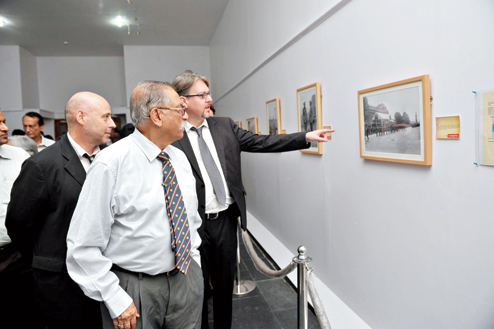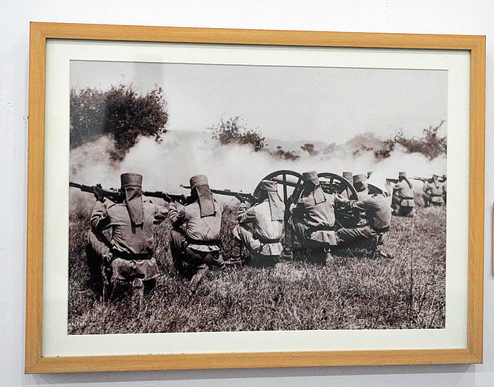Caleidoscope

On a day when French President Francois Hollande was to pay a tribute to the 6,00,000 foreign soldiers who fell in World War I, Alliance Francaise du Bengale, in association with Victoria Memorial Hall, opened to the public a photography exhibition titled “War and the colonies”, presenting glimpses of soldiers at work on French soil from lands as varied as India, Ireland and Senegal, 100 years after the Great War.
“Around 28,500 Indian soldiers came to fight on French and Belgian soil as part of the British army by end-1914. They faced the severe winter of 1914-15 and the war in Neuve Chapelle in March, Ypres in April, Festubert in May and Los in September,” said French consul-general Fabrice Etienne at the inauguration of the exhibition at Victoria Memorial.
“From 1914 to 1918, around 90,000 soldiers in various capacities fought for the freedom of France and Belgium. Of them, 8,500 died and 50,000 were injured. France will never forget the suffering and the heroism of these men,” he added.
General (retd) Shankar Roy Chowdhury pointed out that WWI was no concern of India. “It was not their war. But the Indian army was a professional one and part of the assets of the British Empire. What choice did they have?”
Two factors loaded the situation against them. “They were meant for imperial policing and not equipped for a full-blown battle. Within a week of arrival in Marseille, they were put in the assault zone. Also, their efficiency relied heavily on their personal bond with their British officers. But the 10-12 officers there were in each battalion died within the first week. Young officers, fresh from Britain, were sent in haste to lead the Indian troops.
“No wonder Indians did not fare well in France and Flanders, and were moved out to Asia Minor. Still they got nine Victoria Crosses for gallantry,” Roy Chowdhury said.
Without the colonies, the Allies could not have won, said Kaushik Roy, a professor of history at Jadavpur University. “Of a population of 235 million, 1.2 million Indians were serving in WWI. This is a significant percentage. Raised voluntarily, mainly from Meerut and Lahore, they were mostly illiterate farmers who did not write much except for some letters home. The poorest were not taken as they were thought to be malnourished. Punjabi Muslims, Sikhs, Garhwalis and Gorkhas were the dominant segments while Bengalis and Madrasis were under-represented,” Roy said.
WWI resulted in fragmented identity-building of each race, rather than evoke any pan-Indianness, he added.
The evening concluded with Theophilus Benjamin playing works of French composers on the guitar.
The exhibition is on till November 23, except Monday.
source: http://www.telegraphindia.com / The Telegraph, Calcutta / Front Page> Calcutta> Story> Caleidoscope / by Sudeshna Banerjee / Sunday – November 16th, 2014
